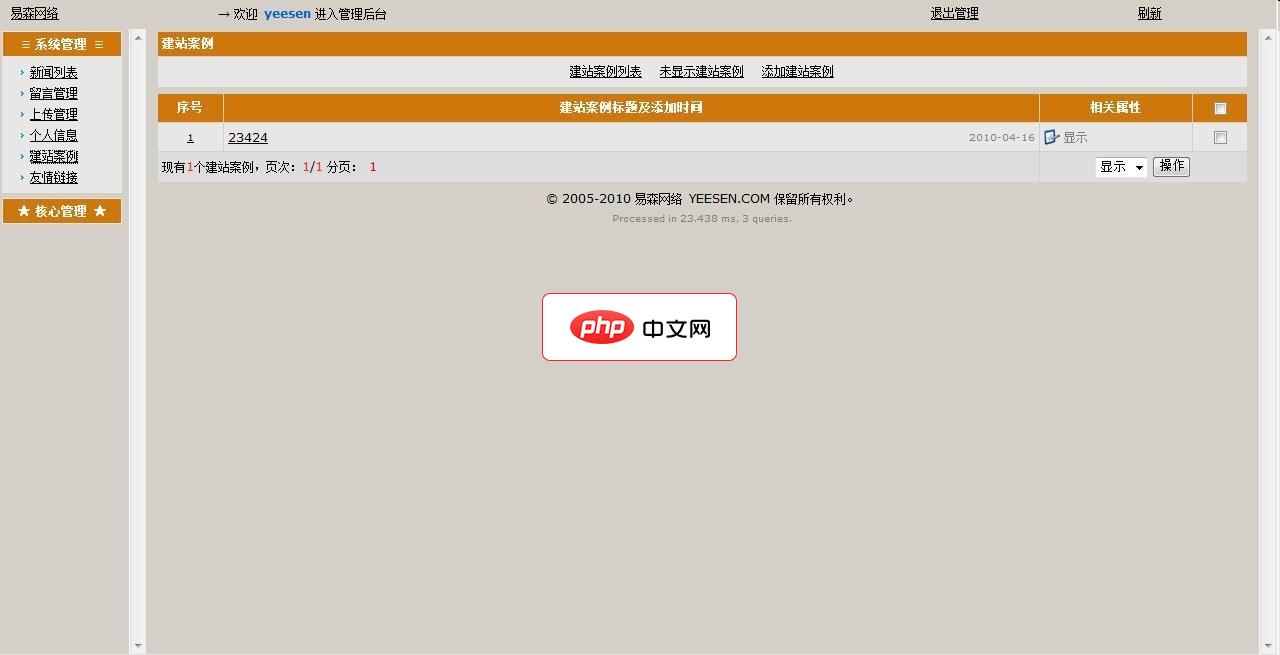WPF用户控件是UI与逻辑的封装单元,通过继承UserControl将常用界面元素组合复用;创建时添加.xaml和.xaml.cs文件,在XAML中定义界面布局,后台代码中定义依赖属性(如ButtonText、ButtonCommand)以支持数据绑定和命令传递;使用时在父窗体引入命名空间后直接实例化控件并设置属性或绑定数据;其与自定义控件的核心区别在于:用户控件侧重组合现有控件、适合固定结构的模块化封装,而自定义控件继承自Control,无默认外观,依赖ControlTemplate实现高度可定制的“无皮肤”控件;为实现数据交互,需在用户控件中注册依赖属性,并通过RelativeSource绑定到自身属性,外部可进行属性赋值或MVVM绑定;事件处理可通过定义公共路由事件实现,但更推荐使用ICommand命令绑定,以保持MVVM模式下ViewModel的纯净性,提升解耦与可测试性。

WPF中的用户控件,说白了,就是你自己封装的一小块UI和逻辑。它让你能把那些反复出现的、有特定功能的界面元素打包起来,像乐高积木一样,随取随用。这东西能极大提升你代码的复用性,让界面开发变得更模块化,也更容易维护。
在WPF里创建一个用户控件,其实挺直观的。你可以在项目中右键,选择“添加” -> “用户控件(WPF)”,给它起个名字,比如叫
MyCustomButton
创建好后,你会得到一个
.xaml
.xaml.cs
.xaml
<UserControl>
<!-- MyCustomButton.xaml -->
<UserControl x:Class="WPFApp.MyCustomButton"
xmlns="http://schemas.microsoft.com/winfx/2006/xaml/presentation"
xmlns:x="http://schemas.microsoft.com/winfx/2006/xaml"
xmlns:mc="http://schemas.openxmlformats.org/markup-compatibility/2006"
xmlns:d="http://schemas.microsoft.com/expression/blend/2008"
mc:Ignorable="d"
d:DesignHeight="45" d:DesignWidth="150">
<Border CornerRadius="5" Background="#FF007ACC" Cursor="Hand">
<Button Content="{Binding ButtonText, RelativeSource={RelativeSource AncestorType=UserControl}}"
Command="{Binding ButtonCommand, RelativeSource={RelativeSource AncestorType=UserControl}}"
Foreground="White" FontWeight="SemiBold" FontSize="14"
Padding="10,5" BorderThickness="0" Background="Transparent">
<Button.Template>
<ControlTemplate TargetType="Button">
<Border Background="{TemplateBinding Background}"
BorderBrush="{TemplateBinding BorderBrush}"
BorderThickness="{TemplateBinding BorderThickness}"
CornerRadius="5">
<StackPanel Orientation="Horizontal" HorizontalAlignment="Center" VerticalAlignment="Center">
<!-- 假设这里有个图标,实际项目中可能用Path或Image -->
<TextBlock Text="⚙" Margin="0,0,5,0" VerticalAlignment="Center" FontSize="16"/>
<ContentPresenter HorizontalAlignment="{TemplateBinding HorizontalContentAlignment}"
VerticalAlignment="{TemplateBinding VerticalContentAlignment}"/>
</StackPanel>
</Border>
</ControlTemplate>
</Button.Template>
</Button>
</Border>
</UserControl>在对应的
MyCustomButton.xaml.cs
// MyCustomButton.xaml.cs
using System.Windows;
using System.Windows.Controls;
using System.Windows.Input;
namespace WPFApp
{
public partial class MyCustomButton : UserControl
{
public MyCustomButton()
{
InitializeComponent();
}
// 定义一个依赖属性来设置按钮文本
public static readonly DependencyProperty ButtonTextProperty =
DependencyProperty.Register("ButtonText", typeof(string), typeof(MyCustomButton), new PropertyMetadata("Click Me"));
public string ButtonText
{
get { return (string)GetValue(ButtonTextProperty); }
set { SetValue(ButtonTextProperty, value); }
}
// 定义一个依赖属性来绑定命令
public static readonly DependencyProperty ButtonCommandProperty =
DependencyProperty.Register("ButtonCommand", typeof(ICommand), typeof(MyCustomButton), new PropertyMetadata(null));
public ICommand ButtonCommand
{
get { return (ICommand)GetValue(ButtonCommandProperty); }
set { SetValue(ButtonCommandProperty, value); }
}
}
}使用这个用户控件就更简单了。在你需要的地方,比如
MainWindow.xaml
<!-- MainWindow.xaml -->
<Window x:Class="WPFApp.MainWindow"
xmlns="http://schemas.microsoft.com/winfx/2006/xaml/presentation"
xmlns:x="http://schemas.microsoft.com/winfx/2006/xaml"
xmlns:d="http://schemas.microsoft.com/expression/blend/2008"
xmlns:mc="http://schemas.openxmlformats.org/markup-compatibility/2006"
xmlns:local="clr-namespace:WPFApp" <!-- 引入用户控件所在的命名空间 -->
mc:Ignorable="d"
Title="MainWindow" Height="450" Width="800">
<Grid>
<!-- 使用我们的用户控件 -->
<local:MyCustomButton ButtonText="保存数据"
ButtonCommand="{Binding SaveCommand}"
Width="180" Height="45"
HorizontalAlignment="Center" VerticalAlignment="Center"/>
</Grid>
</Window>你看,现在
MyCustomButton
ButtonText
ButtonCommand
这真的是一个WPF初学者经常会困惑的点,甚至一些有经验的开发者也可能混淆。简单来说,用户控件(User Control)和自定义控件(Custom Control)都是为了实现UI复用,但它们的实现哲学和适用场景有所不同。
用户控件,顾名思义,它更像是你“用户”级别的封装。它本质上是把一个或多个现有的WPF控件组合起来,形成一个新的复合控件。它继承自
System.Windows.Controls.UserControl
而自定义控件,则更像是框架级别的扩展。它通常继承自
System.Windows.Controls.Control
ControlTemplate
Themes/Generic.xaml
所以,我的经验是,如果你的需求是快速封装一个现成的UI组合,用户控件是你的好朋友。如果你的需求是创造一个全新的、可被主题化、可被完全重绘的“基础”控件,那就得硬着头皮去啃自定义控件了。它们不是非此即彼,很多时候,你可能会先用用户控件快速迭代,当发现它需要更深层次的样式或模板化能力时,再考虑重构为自定义控件。
给用户控件添加依赖属性(Dependency Property)是让它真正“活”起来的关键一步,没有它,你的用户控件就只是一个静态的UI片段,无法从外部灵活地配置或绑定数据。这就像给你的乐高积木加上了可插拔的接口,让它们能与其他积木互动。
依赖属性之所以重要,是因为WPF的数据绑定机制就是围绕它们构建的。它们提供了值继承、样式、动画、模板绑定等高级功能。
要给用户控件添加依赖属性,你需要遵循一个特定的模式:
public static readonly DependencyProperty
DependencyProperty.Register
public
get
set
GetValue
SetValue
我们以上面
MyCustomButton
ButtonText
ButtonCommand
ButtonTextProperty
// MyCustomButton.xaml.cs
public partial class MyCustomButton : UserControl
{
// ... 构造函数等其他代码 ...
// 1. 声明一个 public static readonly DependencyProperty 字段
public static readonly DependencyProperty ButtonTextProperty =
// 2. 调用 DependencyProperty.Register 方法进行注册
// 参数1: 属性的名称(字符串)
// 参数2: 属性的类型(typeof(string))
// 参数3: 属性的拥有者类型(typeof(MyCustomButton))
// 参数4: 属性的元数据,这里我们设置了默认值 "Click Me"
DependencyProperty.Register("ButtonText", typeof(string), typeof(MyCustomButton), new PropertyMetadata("Click Me"));
// 3. 提供一个 CLR 属性包装器
public string ButtonText
{
get { return (string)GetValue(ButtonTextProperty); } // 从依赖属性获取值
set { SetValue(ButtonTextProperty, value); } // 设置依赖属性的值
}
// ... 其他依赖属性和方法 ...
}注册
DependencyProperty
PropertyMetadata
PropertyChangedCallback
CoerceValueCallback
在用户控件的XAML内部,你可以通过
RelativeSource={RelativeSource AncestorType=UserControl}MyCustomButton.xaml
Button
Content
ButtonText

如果您是新用户,请直接将本程序的所有文件上传在任一文件夹下,Rewrite 目录下放置了伪静态规则和筛选器,可将规则添加进IIS,即可正常使用,不用进行任何设置;(可修改图片等)默认的管理员用户名、密码和验证码都是:yeesen系统默认关闭,请上传后登陆后台点击“核心管理”里操作如下:进入“配置管理”中的&ld
 0
0

<Button Content="{Binding ButtonText, RelativeSource={RelativeSource AncestorType=UserControl}}"
.../>而在使用用户控件的地方,比如
MainWindow.xaml
ButtonText
<local:MyCustomButton ButtonText="点击这里" />
<local:MyCustomButton ButtonText="{Binding ViewModelPropertyName}" />我个人觉得,掌握依赖属性是WPF开发进阶的必经之路。它虽然初看起来有点啰嗦,需要写很多样板代码,但其背后强大的功能和灵活性是普通CLR属性无法比拟的。尤其是在做数据绑定、样式化和动画时,你会发现它的设计是如此精妙。
当你在用户控件内部有交互行为,比如点击按钮、输入文本等,你需要一套机制来让这些内部行为能够被外部(宿主窗口或父级控件)感知和响应。WPF提供了事件和命令两种主要的策略。
1. 事件处理 (Event Handling)
这是最直接的方式,和C#中传统的事件模式类似。如果你的用户控件内部有一个按钮,你想让外部知道这个按钮被点击了,你可以定义一个公共事件:
// MyCustomButton.xaml.cs
public partial class MyCustomButton : UserControl
{
// ... 依赖属性等 ...
// 定义一个公共事件
public event RoutedEventHandler MyButtonClick;
// 内部按钮的点击事件处理方法
private void InternalButton_Click(object sender, RoutedEventArgs e)
{
// 触发我们定义的公共事件
MyButtonClick?.Invoke(this, new RoutedEventArgs()); // 或者传递原始事件参数
}
}然后在
MyCustomButton.xaml
<!-- MyCustomButton.xaml -->
<UserControl ...>
<Button Click="InternalButton_Click" ... />
</UserControl>在
MainWindow.xaml
MyButtonClick
<!-- MainWindow.xaml --> <local:MyCustomButton MyButtonClick="MyCustomButton_MyButtonClick" />
这种方式简单明了,对于一些简单的交互场景非常有效。但它的缺点是,当你的应用遵循MVVM模式时,直接处理事件会打破ViewModel的纯净性,因为它需要在代码隐藏中进行操作。
2. 命令绑定 (Command Binding)
命令(
ICommand
我们上面
MyCustomButton
ButtonCommand
Command
ButtonCommand
<!-- MyCustomButton.xaml -->
<UserControl ...>
<Button Command="{Binding ButtonCommand, RelativeSource={RelativeSource AncestorType=UserControl}}"
.../>
</UserControl>这样,当内部按钮被点击时,它就会尝试执行
ButtonCommand
在
MainWindow.xaml
MainWindow
DataContext
ICommand
<!-- MainWindow.xaml -->
<Window ...>
<Window.DataContext>
<local:MainViewModel /> <!-- 假设你的ViewModel叫MainViewModel -->
</Window.DataContext>
<Grid>
<local:MyCustomButton ButtonText="执行操作"
ButtonCommand="{Binding PerformActionCommand}"
.../>
</Grid>
</Window>在
MainViewModel.cs
// MainViewModel.cs
using System.Windows.Input; // 需要引用
namespace WPFApp
{
public class MainViewModel : BaseViewModel // 假设你有一个BaseViewModel实现了INotifyPropertyChanged
{
public ICommand PerformActionCommand { get; private set; }
public MainViewModel()
{
// 使用RelayCommand或DelegateCommand实现ICommand
PerformActionCommand = new RelayCommand(PerformAction, CanPerformAction);
}
private void PerformAction(object parameter)
{
// 这里是实际的业务逻辑
MessageBox.Show("命令已执行!");
}
private bool CanPerformAction(object parameter)
{
// 控制命令是否可执行的逻辑
return true; // 暂时总是可执行
}
}
// 简单的RelayCommand实现,实际项目中可能用更完善的库
public class RelayCommand : ICommand
{
private readonly Action<object> _execute;
private readonly Func<object, bool> _canExecute;
public RelayCommand(Action<object> execute, Func<object, bool> canExecute = null)
{
_execute = execute ?? throw new ArgumentNullException(nameof(execute));
_canExecute = canExecute;
}
public bool CanExecute(object parameter) => _canExecute == null || _canExecute(parameter);
public void Execute(object parameter) => _execute(parameter);
public event EventHandler CanExecuteChanged
{
add { CommandManager.RequerySuggested += value; }
remove { CommandManager.RequerySuggested -= value; }
}
}
}我个人在实际项目中几乎总是优先使用命令绑定。它能让你的UI和业务逻辑解耦,提高代码的可测试性和可维护性。事件虽然简单,但一旦项目规模扩大,事件链条就会变得难以追踪和管理。当然,这并不是说事件就一无是处,对于一些纯粹的UI层面的交互,比如一个动画完成的通知,或者一个不涉及业务逻辑的拖拽事件,使用事件也是完全合理的。选择哪种策略,更多的是根据你的项目架构和具体需求来决定。
以上就是WPF中的用户控件如何创建与使用?的详细内容,更多请关注php中文网其它相关文章!

每个人都需要一台速度更快、更稳定的 PC。随着时间的推移,垃圾文件、旧注册表数据和不必要的后台进程会占用资源并降低性能。幸运的是,许多工具可以让 Windows 保持平稳运行。

Copyright 2014-2025 https://www.php.cn/ All Rights Reserved | php.cn | 湘ICP备2023035733号